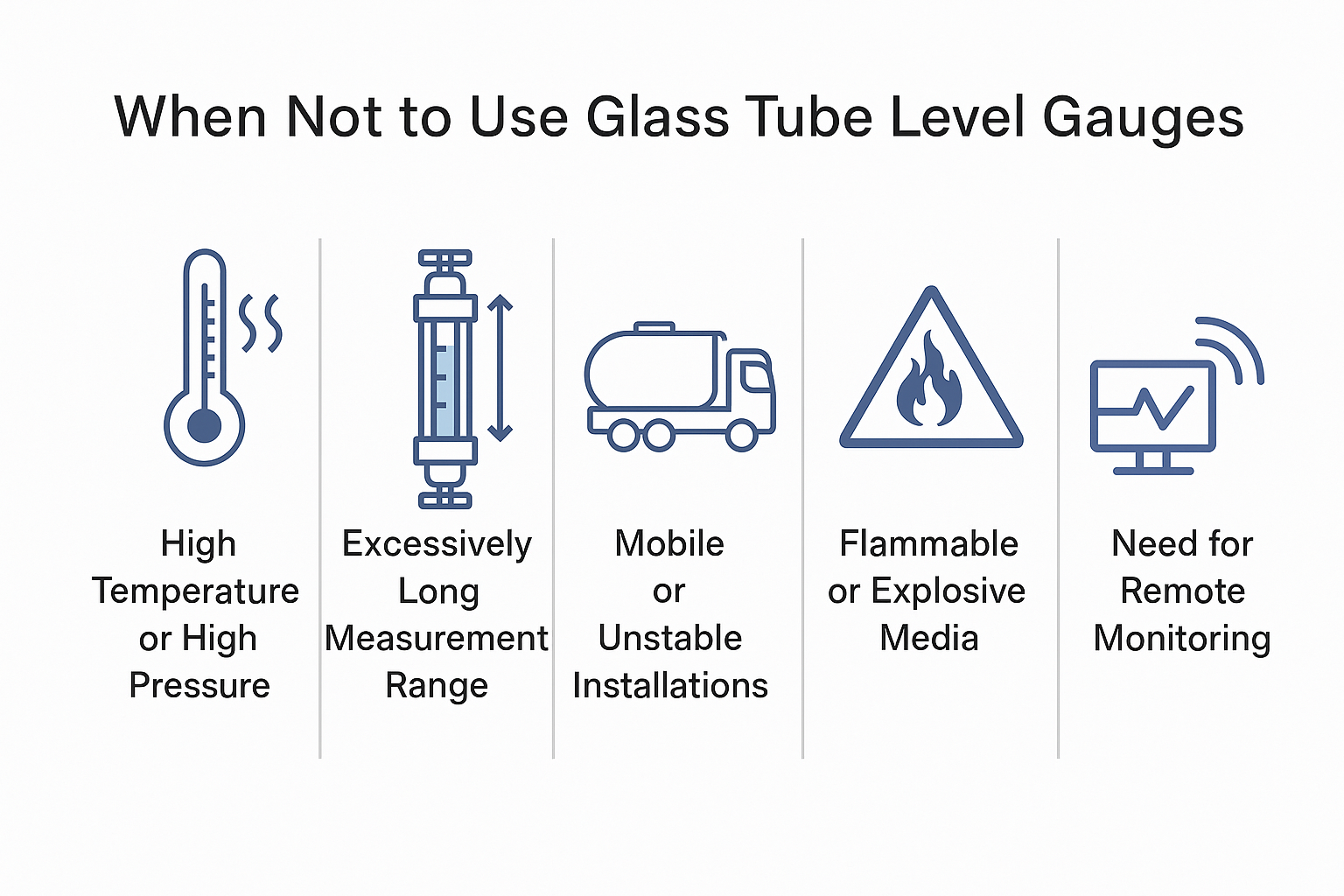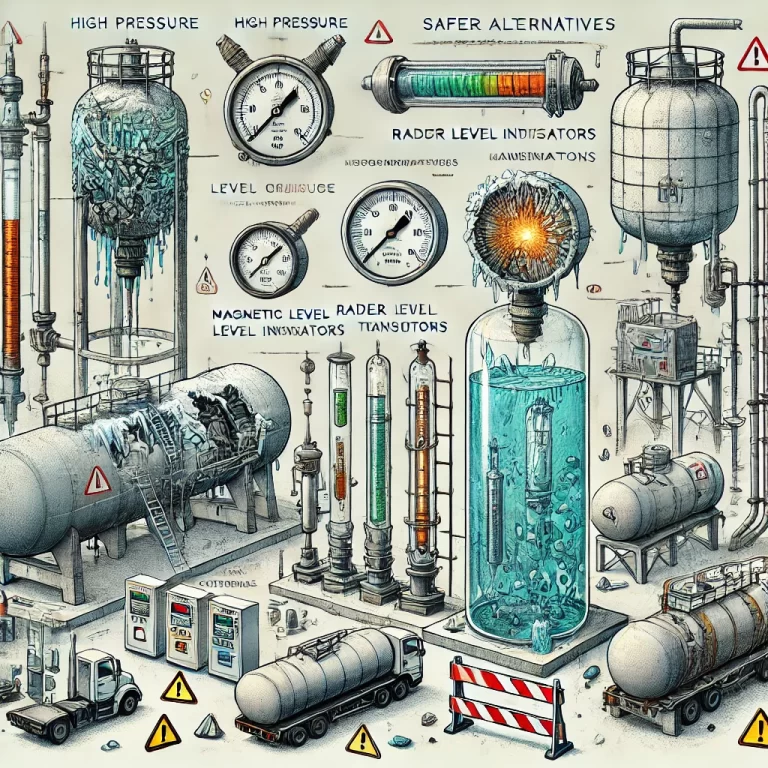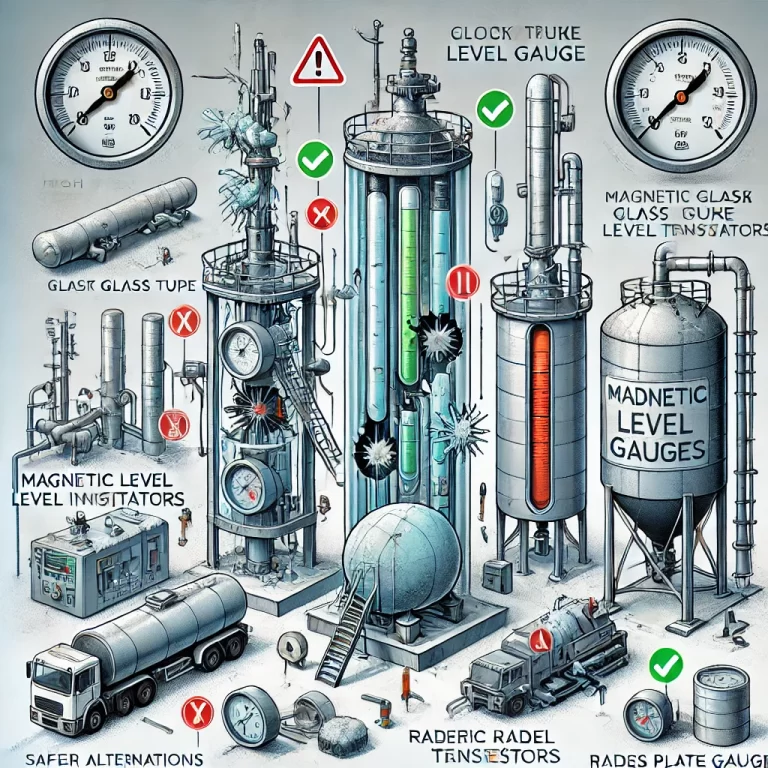Glass tube level gauges are widely used in industrial liquid level monitoring due to their simplicity, visibility, and low cost. However, their use is not suitable in all conditions. This article outlines the specific working conditions where glass tube level gauges are not recommended, and provides safer or more suitable alternatives for each case.
1. High Temperature or High Pressure Applications
Glass as a material has limited resistance to high temperatures and pressures. In environments where these parameters exceed the tolerance of standard borosilicate glass tubes, the risk of bursting or failure increases significantly. In such scenarios, it is recommended to use:
Glass plate level gauges, which are more robust
Quartz glass tubes, which offer higher resistance to heat and pressure

2. Excessively Long Measurement Range
Longer glass tubes experience increased pressure along their length, making them more prone to mechanical stress and failure. If long-range measurement is necessary:
Use modular segmented installations, with each section not exceeding 2000 mm
Consider magnetic level indicators for safer long-distance level indication
3. Mobile or Unstable Installations
Glass tube level gauges are not recommended on mobile tanks or portable systems, as even minor mechanical shocks during movement can cause glass breakage and fluid leakage. Alternative solutions include:
Magnetic flap level gauges, which are more shock-resistant
Remote electronic transmitters, which eliminate glass exposure
4. Flammable or Explosive Media
Although glass tube level gauges are non-electrical devices, their structural vulnerability poses a significant risk in hazardous areas. Any breakage caused by impact or pressure surges can lead to dangerous leaks of flammable substances. In such environments, use:
Explosion-proof magnetic level indicators
Sight glasses with reinforced shielding and safety valves

5. Need for Remote Monitoring or Signal Output
Glass tube level gauges operate purely on mechanical principles and do not support signal transmission for remote monitoring or automation. For processes requiring real-time data or DCS/PLC integration, consider:
Radar or ultrasonic level transmitters
Guided wave radar sensors
Smart magnetic level gauges with 4–20 mA or Modbus output
6. Narrow Installation Space
A minimum space of 220 mm between tank connection points is typically required to install a standard glass tube level gauge. Additionally, the valve arrangement and maintenance access may be restricted in tight areas. For compact installations:
Use side-mounted magnetic level indicators
Consider top-mounted radar level transmitters where applicable
7. Low Ambient Temperatures
In environments prone to freezing, media inside the glass tube may solidify and cause the tube to crack or shatter. Glass tube level gauges are generally unsuitable for ambient temperatures below -10°C, and especially risky below -30°C. For such conditions:
Use magnetic level gauges rated for low temperatures
Include trace heating or insulation if glass gauges must be used

Conclusion
When selecting a level measurement device, it is crucial to evaluate the operating conditions, process media, installation constraints, and safety requirements. While glass tube level gauges are effective in basic applications, they should be avoided in environments with extreme temperatures, pressures, flammable media, or where remote monitoring is required. Alternative devices such as magnetic level indicators, glass plate gauges, and smart transmitters provide safer and more reliable solutions for complex industrial scenarios.
